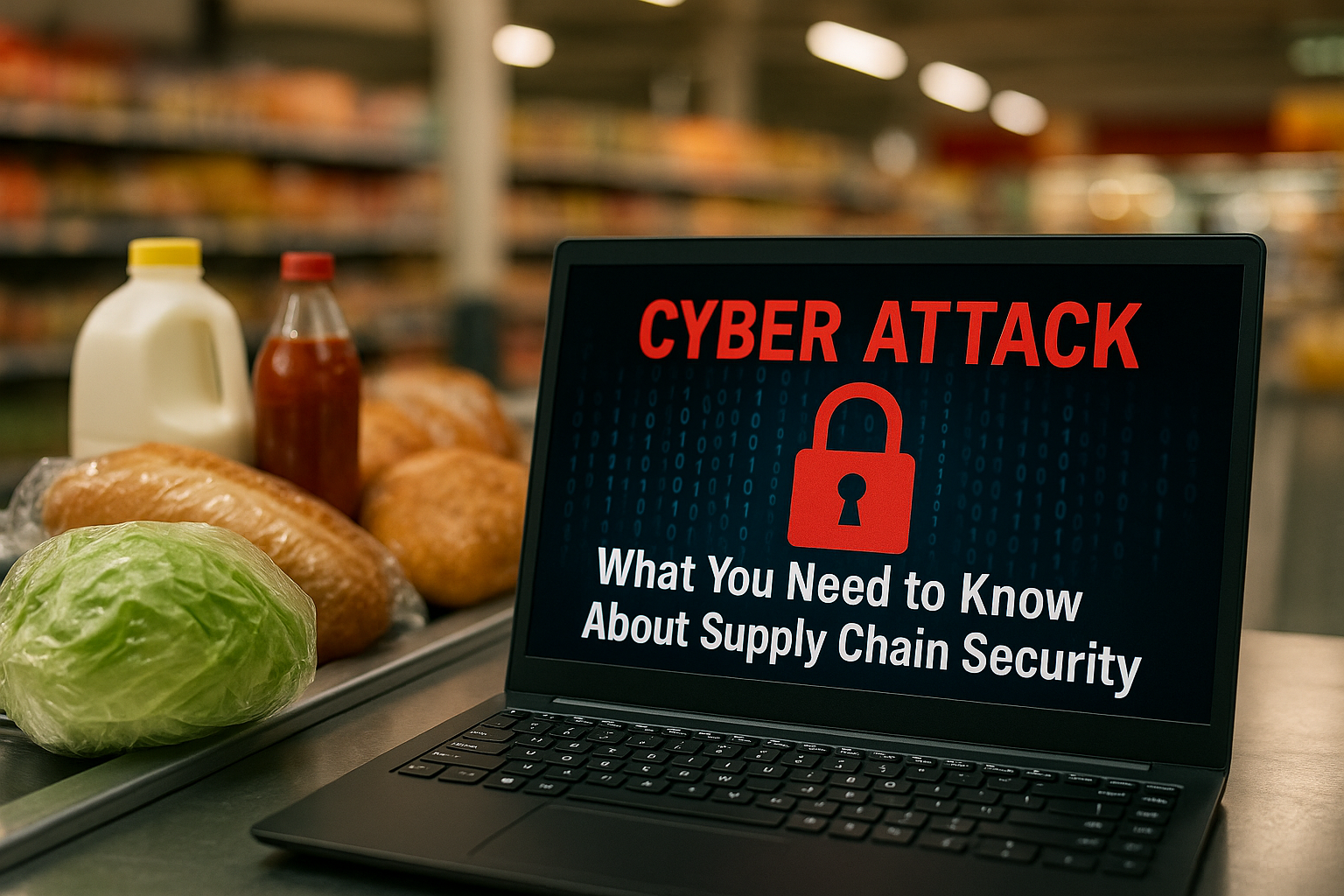In a stark reminder of the escalating cyber threats facing critical infrastructure, a major U.S. grocery distributor has disclosed a significant cyberattack that is causing widespread disruptions to its operations and potentially impacting food deliveries nationwide. This incident highlights the profound vulnerability of our interconnected supply chains to malicious cyber activity and underscores the urgent need for robust cybersecurity measures across all sectors, especially those vital to daily life.
The Cyberattack Unpacked: Operational Disruptions and Financial Fallout
The affected company, a colossal player in North American grocery distribution, recently detected “unauthorized activity” within its IT systems. As a critical immediate response, the company proactively initiated a shutdown of portions of its network to contain the breach. This preventative measure, while essential for cybersecurity incident response, has inevitably led to substantial operational disruptions. The distributor is facing challenges in processing and fulfilling customer orders, with reports indicating potential delays and shortages in food supplies reaching thousands of retail locations across the U.S. and Canada.
The impact of this cyber incident extends beyond immediate operational hurdles. The financial implications are already becoming apparent, with the company’s stock experiencing a notable decline following the disclosure. Analysts are estimating potential significant losses in sales, particularly during a crucial selling period. Such attacks expose the financial fragility of even large enterprises when their core IT systems are compromised, emphasizing the business continuity aspect of cybersecurity.
Why the Food Supply Chain is a Prime Target for Cybercriminals
This attack is not an isolated incident but rather part of a growing trend of cyberattacks targeting the food and agriculture sector. The interconnected and complex nature of modern food supply chains makes them an attractive target for cybercriminals and even state-sponsored threat actors. Here’s why:
- High Impact, High Pressure: Disrupting the food supply has immediate and tangible consequences for millions of consumers. This pressure can be leveraged by attackers to extort significant ransoms, particularly in ransomware attacks.
- Operational Technology (OT) Vulnerabilities: Many food processing and distribution facilities rely on industrial control systems (ICS) and operational technology (OT) that may not have been designed with modern cybersecurity best practices in mind, making them susceptible to exploitation.
- Supply Chain Interdependencies: A breach at one critical node, like a major distributor, can trigger a cascading effect, impacting numerous businesses downstream, from farmers and manufacturers to grocery stores and consumers.
- Data Richness: Food distributors handle a wealth of sensitive data, including customer order information, logistical details, and potentially even payment data, all of which are valuable targets for data exfiltration and identity theft.
- Ransomware as a Service (RaaS): The proliferation of Ransomware-as-a-Service models makes it easier for various threat groups, regardless of their technical sophistication, to launch disruptive attacks.
Safeguarding Our Digital Pantry: Recommendations for Cybersecurity Resilience
This incident serves as a critical wake-up call for businesses across all sectors, especially those involved in critical infrastructure. To enhance cybersecurity resilience and protect against future attacks, organizations should prioritize the following:
- Robust Network Security: Implement multi-layered network security defenses, including firewalls, intrusion detection/prevention systems (IDS/IPS), and strong access controls. Regular vulnerability assessments and penetration testing are crucial.
- Endpoint Detection and Response (EDR): Deploy EDR solutions to monitor endpoints for suspicious activity, detect threats in real-time, and enable rapid response.
- Regular Data Backups: Implement a comprehensive data backup strategy with offline and immutable backups to ensure business continuity even in the event of a successful ransomware attack.
- Employee Cybersecurity Training: Phishing and social engineering remain primary attack vectors. Regular and engaging cybersecurity awareness training for all employees is paramount.
- Incident Response Plan (IRP): Develop, regularly test, and refine a detailed incident response plan. This plan should outline clear steps for identifying, containing, eradicating, and recovering from cyberattacks.
- Supply Chain Risk Management: Organizations must assess and manage cybersecurity risks not only within their own operations but also across their entire supply chain, including third-party vendors and partners.
- Threat Intelligence Sharing: Participating in industry-specific threat intelligence sharing initiatives can help organizations stay informed about emerging threats and best practices.
Conclusion: A Call for Collective Cybersecurity Vigilance
The cyberattack on a major grocery distributor is a potent reminder that cybersecurity is not just an IT issue; it’s a fundamental business imperative and a matter of national security. As our lives become increasingly intertwined with digital systems, investing in advanced cybersecurity solutions, fostering a culture of security awareness, and prioritizing robust incident response capabilities are no longer optional. Proactive measures and collaborative efforts are essential to fortify our digital defenses and ensure the uninterrupted flow of essential goods and services, safeguarding our economy and our way of life from the ever-evolving landscape of cyber threats.




